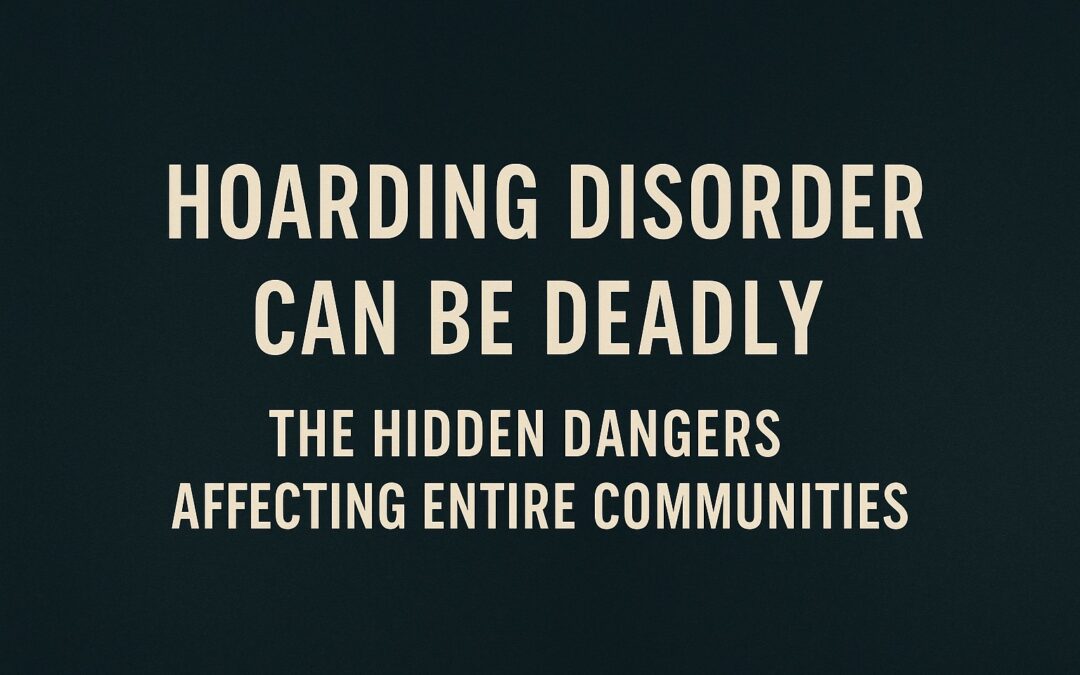When clutter becomes a crisis, the consequences go far beyond the front door.
On May 28, 2025, a fire broke out on Scott Avenue in Jeannette, right here in Westmoreland County. One life was lost. A firefighter was injured. And behind the headlines was a quiet, invisible factor that turned a house fire into a deadly disaster: hoarding disorder.
According to the coroner, emergency crews were unable to reach the victim in time due to conditions inside the home — extreme clutter, blocked access points, and flammable material piled high. Tragically, this is not an isolated event. It’s a pattern.
This is what hoarding disorder can do.
It can turn a minor kitchen fire into an uncontrollable inferno.
It can block a hallway that might have been a path to safety.
It can endanger the very people who show up to help — our firefighters, EMS workers, and police.
A Threat to First Responders
Hoarding conditions aren’t just difficult — they’re dangerous. Firefighters often face:
-
Unstable stacks of items that can collapse while they work.
-
Blocked exits and windows, making escape or rescue nearly impossible.
-
Accelerated fire spread, as paper, cardboard, and plastics act like fuel.
-
Hidden hazards, such as expired chemicals or overloaded electrical systems.
When responders enter a hoarded home, they’re walking into a chaotic maze of risks. Every second they spend navigating clutter is a second someone inside may not have.
It’s Not Just a Personal Problem
Hoarding disorder affects more than the person living in the home.
It affects neighbors, who worry about fire hazards.
It affects families, who feel helpless and ashamed.
It affects communities, where blighted properties can lower morale and property values.
And most of all, it affects first responders, who risk their lives trying to rescue someone from a situation that could have been addressed sooner — if only people had known what to look for, and how to help.
A Growing Crisis
This issue is only going to grow. Why?
-
Our population is aging, and hoarding becomes more likely with age, isolation, and cognitive decline.
-
It has never been easier to acquire — online shopping, social media marketplaces, and subscription services make accumulation instant and constant.
-
Stigma keeps people silent, afraid to ask for help.
Left unaddressed, hoarding disorder will quietly continue to take lives — not just through fires, but through falls, illness, eviction, and deep psychological distress.
What Can We Do?
At Fight the Blight, we’re working to flip the narrative.
We don’t just clean out homes — we stand beside people as they work through what’s behind the clutter.
We believe:
-
Recovery is possible, but it starts with compassion, not condemnation.
-
Communities must be part of the solution — from code enforcement to clergy to neighbors willing to check in instead of look away.
-
Education is key. Hoarding isn’t about laziness. It’s about trauma, grief, fear, and survival. When we understand that, we respond differently.
If you’re concerned about someone — or about your own situation — please reach out. No shame. No judgment. Just support.
🔗 Visit our Hoarding Disorder Support page to learn about our groups, in-home assistance, and referrals.
Let’s talk about it — before the sirens come. Read the news report referenced in this post HERE
